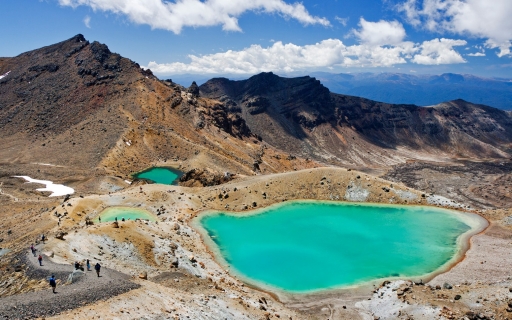Whanganui Weather and Climate: A Comprehensive Guide
The weather in Whanganui sees moderate temperature fluctuations over the course of a year.
Temperatures can be pleasant at the high end
to roughly mild at the low end.
It is also known for its large amounts of rainfall.
Let’s explore the climate details in depth to provide you with a complete overview.
Average maximum day and minimum night temperature
In Whanganui, seasonal changes bring about a moderate variation in temperatures. Typically, average maximum daytime temperatures range from a pleasant 22°C in February to a moderate 13°C in the coolest month, July.
Nights are cooler, with lows often dropping to around 7°C during the colder months.Check out our detailed temperature page for more information.
Temperature ranges by month
Precipitation and rainy days
Whanganui experiences significant rainfall throughout the year, averaging 1189 mm of precipitation annually. Precipitation levels in Whanganui remain relatively steady throughout the year. October has the most rain, with 115 mm over 14 days. In March, this drops slightly to 73 mm, making the city's climate fairly predictable.
The mean monthly precipitation over the year, including rain, hail and snow
Sunshine over the year
For those who appreciate different seasons, Whanganui serves as an ideal destination. Expect longer, more sun-filled days in January with an average of 7.0 hours of sunshine daily, and embrace the darker days in June, offering only 2.6 hours of daily sunlight.
Visit our detailed sunshine hours page for more information.
Monthly hours of sunshine
Daily hours of sunshine
Average humidity
The city experiences its highest humidity in June, reaching 87%. In January, the humidity drops to its lowest level at 75%. What does this mean? Read our detailed page on humidity levels for further details.
Relative humidity over the year
Forecast for Whanganui



Select a Month of Interest
Check the conditions for any month of the year.
The best time of year to visit Whanganui in New Zealand
During the months of January, February and March you are most likely to experience good weather with pleasant average temperatures that fall between 20°C and 26°C.Other facts from our historical weather data:
February has an average maximum temperature of 22°C and is the warmest month of the year.
The coldest month is July with an average maximum temperature of 13°C.
October tops the wettest month list with 115 mm of rainfall.
March is the driest month with 73 mm of precipitation.
January is the sunniest month with an average of 210 hours of sunshine.
No idea where to travel to this year? We have a tool that recommends destinations based on your ideal conditions. Find out where to go with our weather planner.



